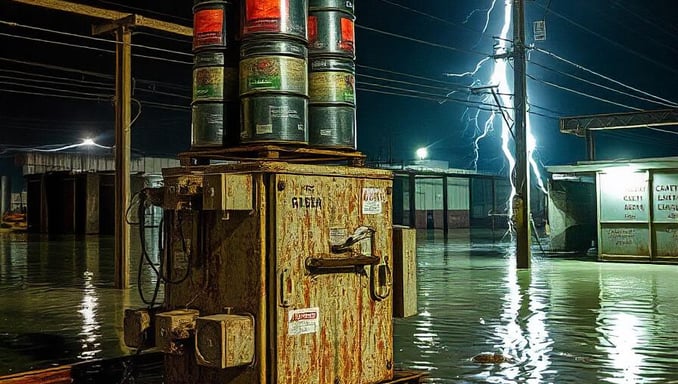Understanding Area Electrical Classification
The article focuses on managing fire and explosion risks in high-risk industries such as chemicals, oil, and gas. It outlines strategies for identifying hazards (e.g., flammable gases or dusts), assessing risk levels, and mitigating potential dangers.
RAGAGEPPROCESS SAFETY INFORMATIONPROCESS SAFETY
Ryan Nitzel
1/20/20242 min read


In industrial settings, particularly those involving flammable gases, vapors, or dusts, electrical classification plays a crucial role in preventing accidents. This article explores the different classes and divisions of electrical areas, their purpose, and how to implement them effectively.
What is Electrical Classification?
Electrical classification involves identifying areas where explosive materials are present and classifying them based on risk levels. The primary goal is to ensure that electrical equipment used in these areas does not become an ignition source, thereby protecting workers and preventing accidents.
Different Classes and Divisions
Class 1 : These are the most hazardous areas where flammable gases or vapors are present in sufficient quantities to ignite.
Division 1 : Locations where ignitable concentrations are likely under normal operations.
Division 2 : Areas where ignitable concentrations are not likely, but could be present under specific conditions.
Class 2 : These areas involve combustible dusts that pose a fire or explosion risk.
Division 1 : Dusts are present in hazardous quantities.
Division 2 : Dust clouds are not likely to exist.
Class 3 : Areas with ignitable fibers or flyings, posing a risk of fire or explosion.
Division 1 : Ignitable materials are present in hazardous concentrations.
Division 2 : Such concentrations are unlikely.
Purpose of Classification
The classification system is designed to guide the selection of appropriate electrical equipment that can operate safely in specific environments. By adhering to these standards, employers can mitigate risks and ensure compliance with legal requirements.
How to Implement
Conduct a Hazard Assessment : Identify areas within your facility where hazardous materials are present.
Classify Each Area : Based on the type and likelihood of hazards, classify each area according to the NFPA standards (e.g., Class 1, Division 1).
Select Appropriate Equipment : Choose electrical equipment rated for the specific classification, such as explosion-proof motors or intrinsically safe devices.
Involve Experts : Engage safety professionals or engineers to ensure accurate classification and selection of equipment.
Regular Inspections and Maintenance : Maintain compliance with standards through routine checks and updates.
International Standards
While NFPA provides guidelines in the US, international standards like those from IEC use a different system based on zones rather than classes and divisions. This highlights the importance of understanding local regulations and standards.
Conclusion
Electrical area classification is a vital safety measure for industrial environments. By accurately classifying areas and selecting appropriate electrical equipment, employers can significantly reduce the risk of accidents. Compliance with standards like NFPA ensures legal adherence and contributes to a safer work environment. Implementing this system effectively involves thorough assessment, expert consultation, and ongoing maintenance.
© 2025. All rights reserved.
